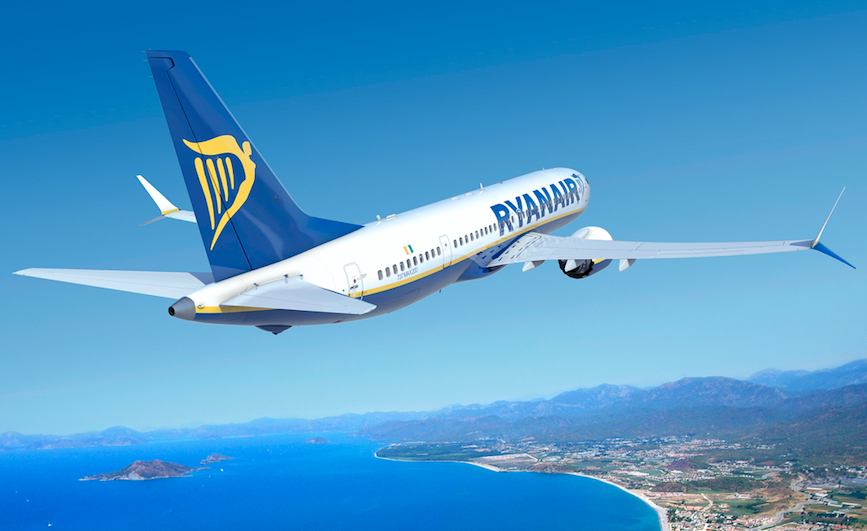
Ryanair Holdings plc reported a H1 after tax profit of €1.79bn, which is 18% lower than the prior-year H1 PAT of €2.18bn, as strong traffic growth (up 9%) to 115m customers was offset by lower air fares, which declined 7% in the second quarter.

H1 highlights include:
- Traffic grew 9% to a record 115m, despite repeated Boeing delays.
- Ave. fare fell 10% (-15% in Q1 & -7% in Q2).
- 170x B737 “Gamechangers” in 608 fleet at 30 Sept.
- 5 new bases & 200 new routes opened for S.24.
- “Approved OTA” partnerships now protect over 90% of OTA consumers.
- Fuel hedges extended: 85% of H2 FY25 covered at $79bbl & 75% of FY26 at $77bbl.
- €700m share buyback completed in Aug. & over 30% of €800m follow-on now done.
- €0.223 interim div. per share declared (payable in Feb. 2025).
H1 FY25 BUSINESS REVIEW
Ryanair Group CEO Michael O’Leary, said:
Revenue & Costs:
“Total H1 revenue rose 1% to €8.69bn. Scheduled revenue fell 2% to €5.95bn. The move of half Easter into PYQ4 and out of Q1, consumer spending pressure (driven by higher-for-longer interest rates and inflation reduction measures) and a drop in OTA bookings ahead of S.24 necessitated more price stimulation than originally expected (with Q1 fares down 15% & Q2 down 7%) as Ryanair maintained its ‘load active/yield passive’ pricing policy. Many customers are switching to Ryanair for our lower air fares. As a result, we are capturing record share gains across most markets. Traffic, despite repeated Boeing delivery delays, grew 9% to 115m while ancillary revenues were resilient, rising 10% to €2.74bn. Operating costs performed well, rising 8% (lagging behind 9% traffic growth) to €6.68bn, as fuel hedge savings offset higher staff and other costs due, in part, to Boeing delivery delays. While modest delay compensation was received in H1 (mainly maintenance credits) this does not offset the substantial impact of a 5m+ passenger shortfall in FY25 due to these delivery delays.
H2 FY25 fuel is 85% hedged at $79bbl, derisking the Group during the recent period of significant fuel price volatility. FY26 hedge cover has also been increased to 75% at $77bbl, securing modest year-on-year price savings.
Balance Sheet, Liquidity & Shareholder Returns:
Ryanair’s balance sheet is one of the strongest in the industry with a BBB+ credit rating (both S&P and Fitch). Gross cash was over €3.3bn and net cash was €0.6bn at 30 Sept., despite €0.9bn capex, €0.9bn share buybacks and a €0.2bn final dividend in H1. Our owned B737 fleet (580 aircraft) is fully unencumbered, which widens Ryanair’s cost advantage over competitor airlines, many of whom are exposed long term to expensive finance and lease costs.
The Group restarted share buybacks in May, with €700m completed in Aug. We expect the €800m follow-on programme to be completed by mid 2025. When complete, Ryanair will have returned almost €9bn (incl. dividends) to shareholders since 2008, with approx. 36% of the issued share capital repurchased. A final dividend of €0.178 per share was paid in Sept. and today the Board (in line with Ryanair’s dividend policy) has declared an interim dividend of €0.223 per share, to be paid in late Feb. 2025.
FLEET & GROWTH
Ryanair had 172x B737 Gamechangers in our fleet at 31 Oct. We now expect our remaining 9 Q3 deliveries to slip into Q4 due to recent Boeing strikes. While we continue to work with Boeing leadership to accelerate aircraft deliveries ahead of peak S.25, the risk of further delivery delays remains high. We believe it is therefore sensible to moderate Ryanair’s FY26 traffic growth target to 210m passengers (previously 215m) to reflect these delivery delays, as we wish to avoid being over-scheduled, over-crewed and over costed as we were in S.24.
During S.24 we operated our largest ever schedule, carrying a new record of 20.5m passengers in one calendar month (Aug.). Our S.24 network included 5 new bases and over 200 new routes. As we move into W.24 and plan for S.25, we’ll continue to reallocate capacity, and growth, to regions and airports who are investing in growth by cutting/scrapping aviation taxes (as Sweden, Hungary and various Italian regions have) or who are incentivising traffic growth. To date, over 90% of S.25 capacity is on sale, incl. 165 new routes.
We expect European short-haul capacity to remain constrained for some years as many of Europe’s Airbus operators work through the Pratt & Whitney engine repairs, both major OEMs struggle with delivery backlogs, and airline consolidation continues, including Lufthansa’s takeover of ITA (Italy) and the impending sale of TAP (Portugal). These capacity constraints, combined with our widening cost advantage, strong balance sheet, low-cost aircraft orders and industry leading operational resilience will, we believe, facilitate Ryanair’s low-fare profitable growth to 300m passengers over the next decade.

